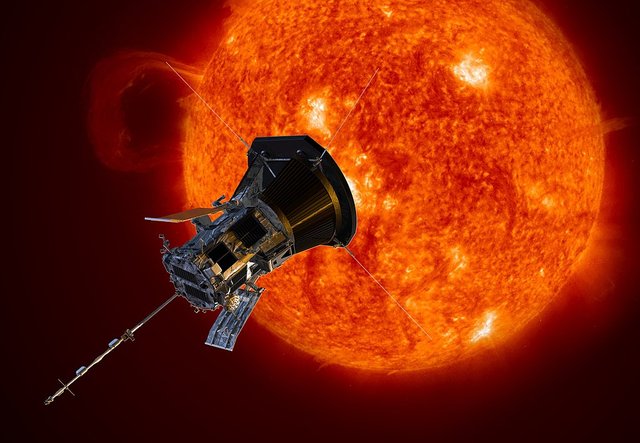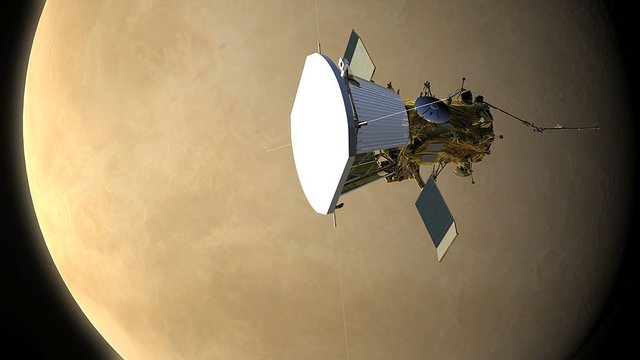The NASA spacecraft will fly into the atmosphere of the Sun!
Parker Solar Probe is the first probe to take measurements inside our star's crown. The device will significantly approach the Sun in a place where the temperature reaches over 1,300 degrees Celsius! A special shield will protect the probe from the hellish heat.
Artistic vision of the Parker Solar Probe

By NASA/Johns Hopkins APL/Steve Gribben link [Public domain]
NASA launches its solar probe, the first mission that will approach our star. At maximum zoom, the probe will pass about 6 million kilometers above the surface of the Sun, which will allow you to directly examine its hot atmosphere. Many space probes had previously studied the Sun, but none of them had the potential of a new mission. The project cost $ 1.5 billion and will last until 2025. The device has the size of a passenger car, and most instruments are hidden behind a thermal shield, which is 2.3 meters in diameter and 11.5 centimeters thick. It will keep the temperature around 30 degrees Celsius, at which all probe systems will be able to work safely. Four measuring instruments are mounted on the probe, which are to accurately examine the atmosphere of our star. The results of the research will give us an answer on how the solar atmosphere works, what exactly happens in the Sun's crown and will allow you to learn more about the nature of the solar wind.
Artistic vision of the Parker Solar Probe during a flight next to Venus

By NASA link [Public domain]
Scientists believe that the Parker Solar Probe will help them better predict cosmic weather so that they can warn us about any type of solar flares earlier. Currently, the Sun is quite calm, approaching the minimum level of activity in its 11-year cycle. But in a few years the Sun's activity will start to grow again, then the results of this mission will be very useful. Already on September 28, the probe will fly past Venus, then it will reach the first orbit around the Sun. The second flight around Venus is scheduled for December 21, 2019. This will mark the orbit closer to the Sun. At the end of November 2, 2024, the probe will pass Venus the last time (for the seventh time). Finally, the probe on December 19, 2024, will approach our star at a record distance of about 6.5 million kilometers.
Greetings to lovers of Astronomy!
Sources:
How NASA's New Solar Probe Will 'Touch' the Sun on Historic Mission
Parker Solar Probe
Parker Solar Probe PL
and my knowledge...
All rights reserved by @astromaniac 2018

Congratulations @astromaniac! You have completed the following achievement on Steemit and have been rewarded with new badge(s) :
Click on the badge to view your Board of Honor.
If you no longer want to receive notifications, reply to this comment with the word
STOPTo support your work, I also upvoted your post!
This post has been voted on by the steemstem curation team and voting trail.
There is more to SteemSTEM than just writing posts, check here for some more tips on being a community member. You can also join our discord here to get to know the rest of the community!
Congratulations @astromaniac! You have completed the following achievement on Steemit and have been rewarded with new badge(s) :
Click on the badge to view your Board of Honor.
If you no longer want to receive notifications, reply to this comment with the word
STOPExciting. Reminds me of the movie 'sunshine'.
It also shows that there is no such thing as temperature in a vacuum as the temperature of the instruments can be kept at 30C.
Another danger must be the strong radiation at such proximity.
Thanks for sharing.
Exactly. A shield set up in front of the heat source in a vacuum is enough. Regards